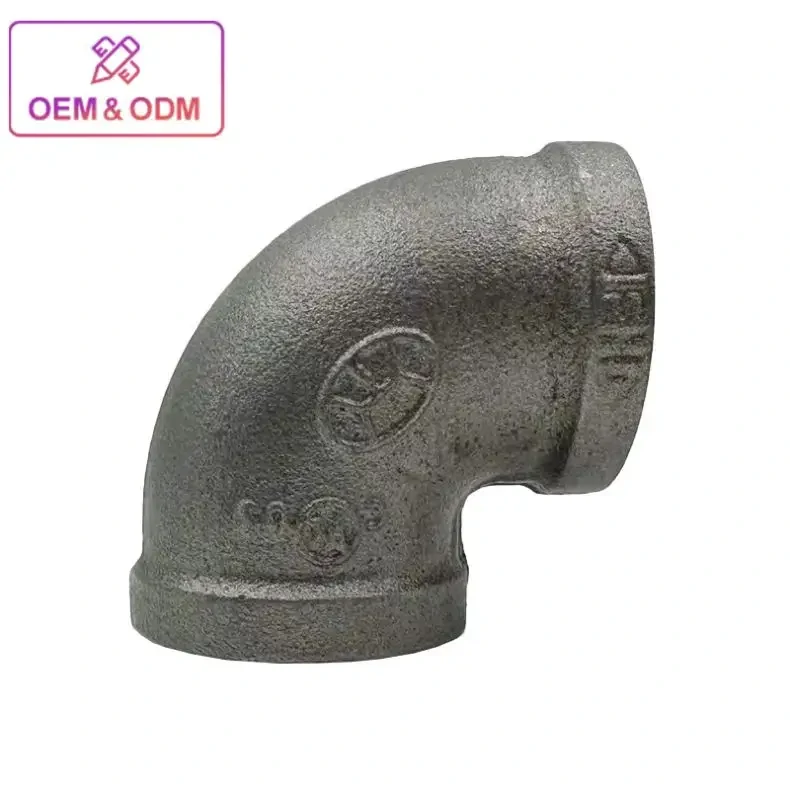While black malleable iron pipe fittings offer various advantages, they also have limitations and drawbacks that should be considered when selecting materials for a piping system.
Some of these limitations include:
- Corrosion Susceptibility: Despite being more corrosion-resistant than standard cast iron fittings, black malleable iron fittings are still susceptible to rust and corrosion over time, especially in environments with high humidity, moisture, or exposure to corrosive substances. This limitation may necessitate regular inspection, maintenance, and protective measures to prevent degradation and ensure the longevity of the fittings.
- Brittleness: Malleable iron fittings are less ductile than other materials such as steel or brass, making them more prone to cracking or fracturing under certain conditions, particularly in applications where they are subjected to impact or stress. This brittleness can pose a risk of failure, especially in high-pressure or high-stress environments.
- Limited Temperature Range: Black malleable iron fittings have a limited temperature range compared to materials like stainless steel or copper. They may not be suitable for applications involving extremely high or low temperatures, as they can become brittle at low temperatures and lose strength at high temperatures, potentially compromising their performance and integrity.
- Threaded Connections: Black malleable iron fittings typically rely on threaded connections, which can be more prone to leaks compared to welded or soldered connections, especially if not properly sealed or installed. black malleable iron pipe fittings Threaded connections may also require periodic re-tightening or resealing to maintain a leak-free seal over time.
- Weight: Malleable iron fittings tend to be heavier than fittings made from other materials such as PVC or plastic, which can make handling and installation more labor-intensive, especially in large or complex piping systems. The additional weight may also increase shipping costs and require additional support structures.
- Cost: While black malleable iron fittings are generally more affordable than materials like stainless steel or brass, they may still be more expensive than alternative materials such as PVC or galvanized steel. The initial cost of malleable iron fittings, along with potential maintenance and replacement expenses, should be considered when evaluating overall project costs.
- Environmental Impact: Malleable iron production processes can have environmental impacts, including energy consumption, emissions, and waste generation. While efforts are made to minimize these impacts through sustainable practices and recycling initiatives, the environmental footprint of malleable iron fittings should be considered when assessing their suitability for a project.
Despite these limitations, black malleable iron fittings remain a popular choice for various piping applications due to their durability, strength, and compatibility with a wide range of pipe materials. However, it’s essential to carefully evaluate the specific requirements and conditions of a project to determine whether malleable iron fittings are the most suitable option. Alternative materials and fittings may offer better performance, longevity, or cost-effectiveness depending on the application.
